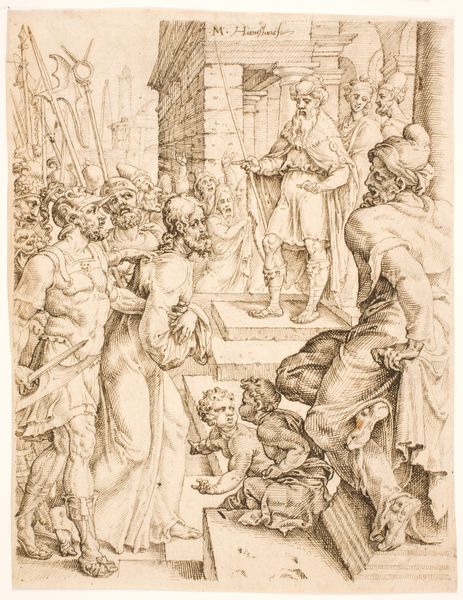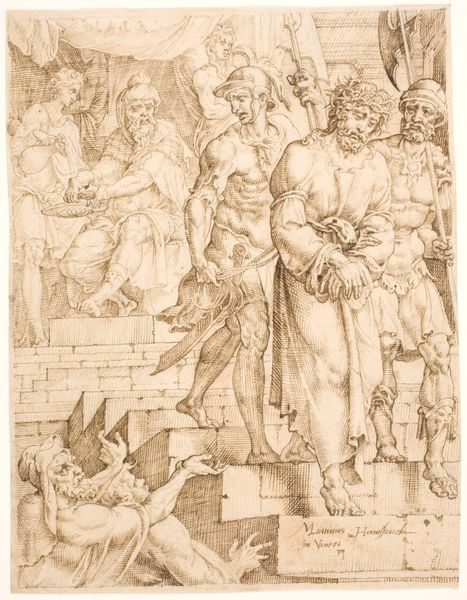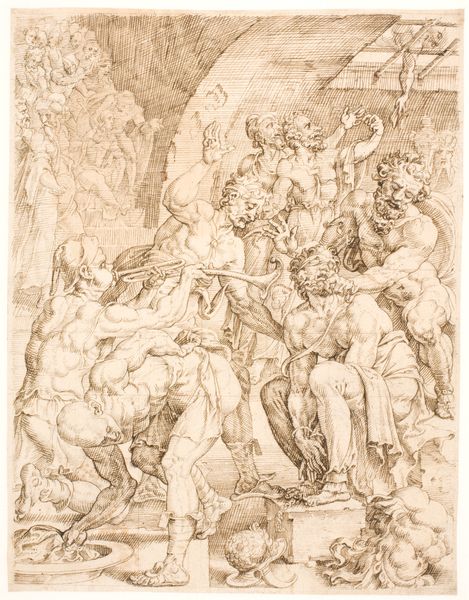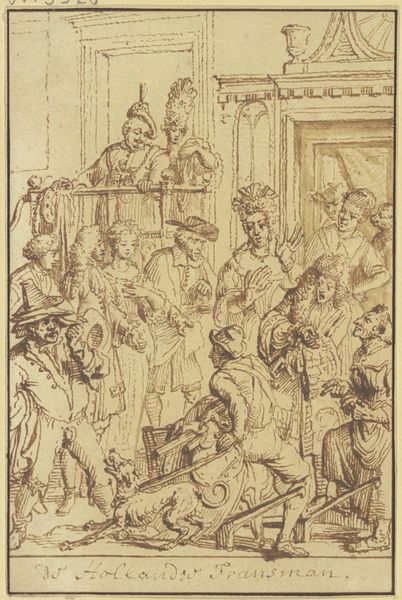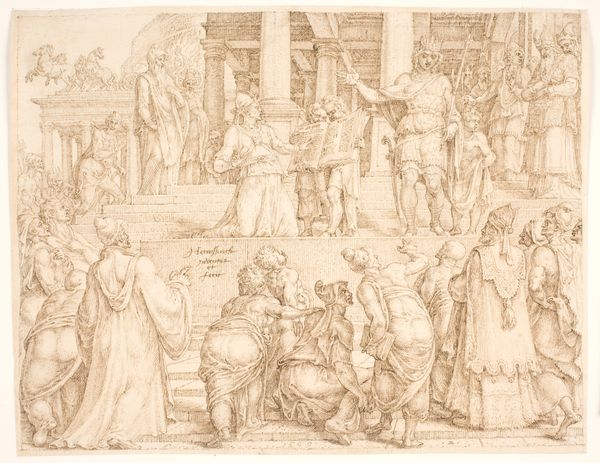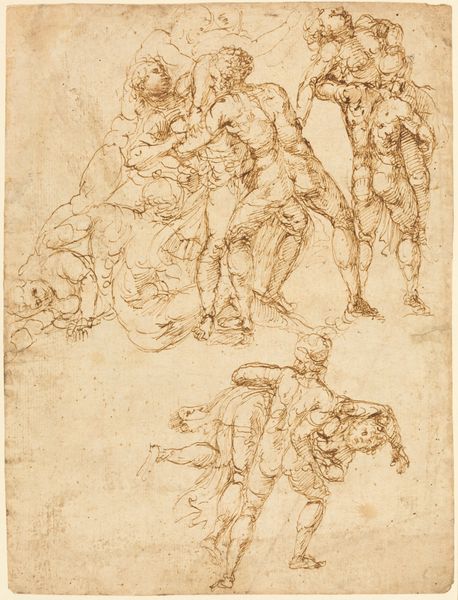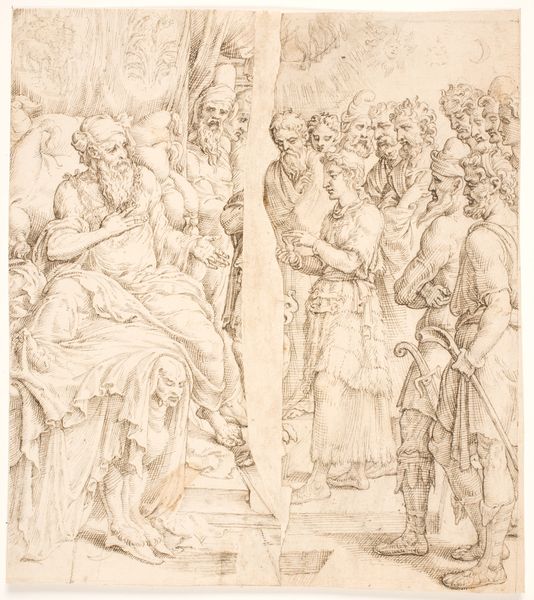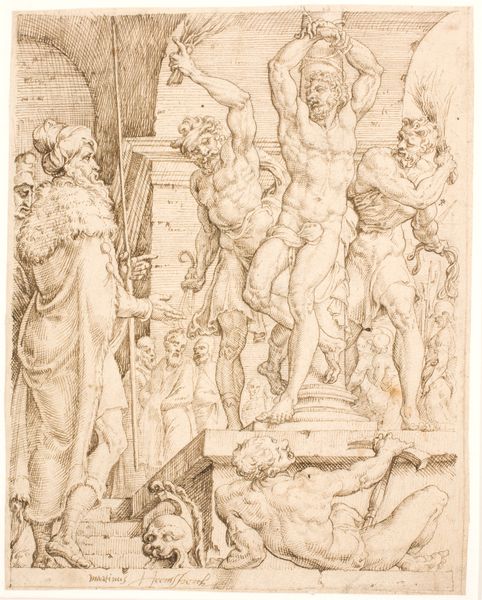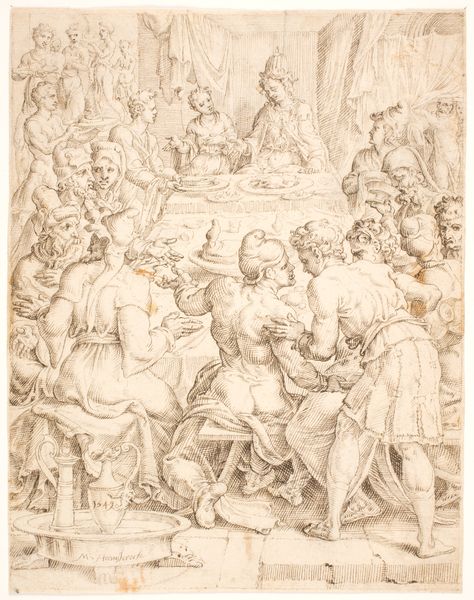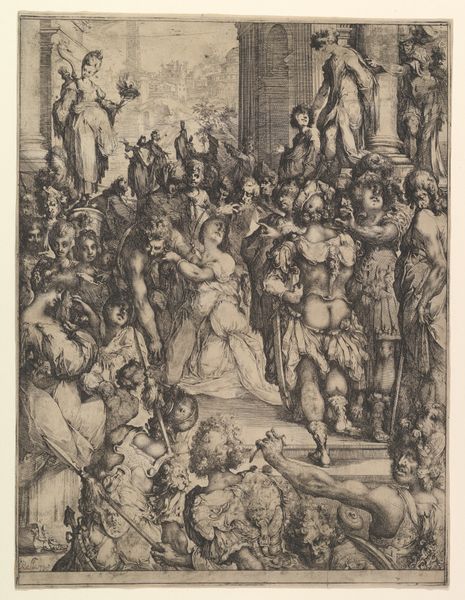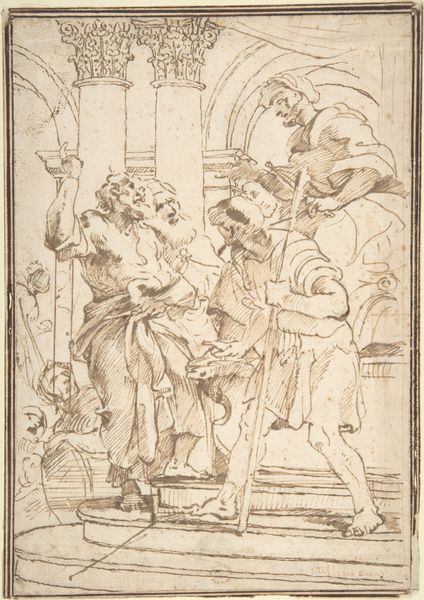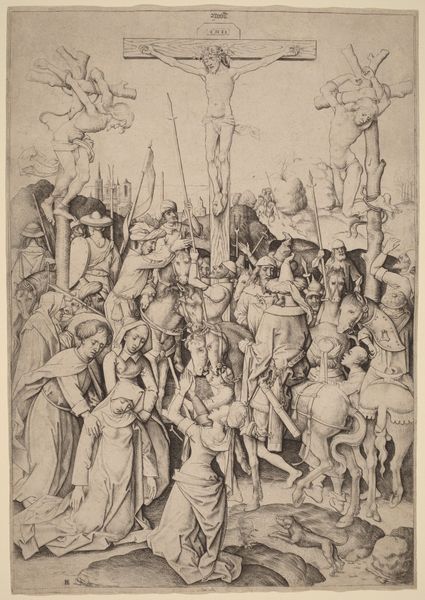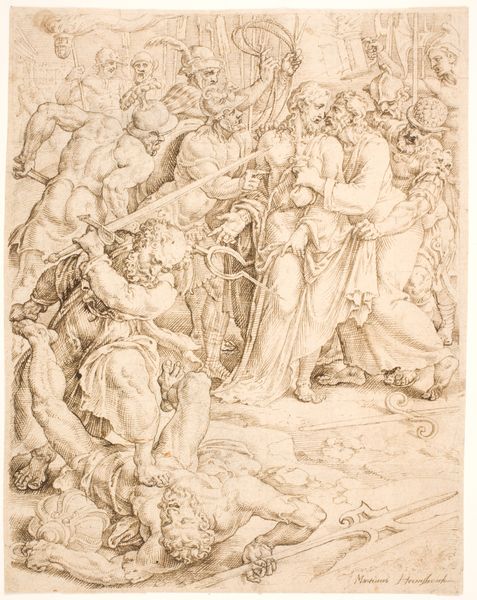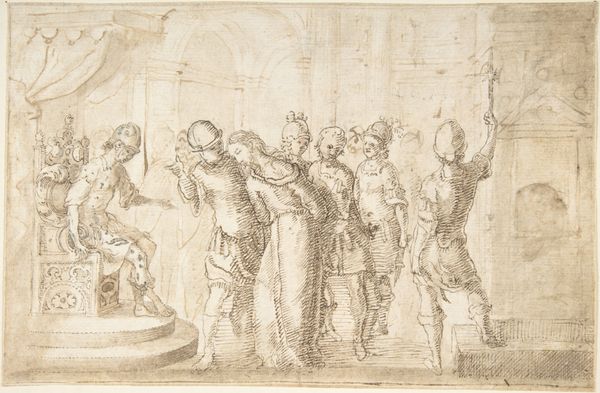
drawing, print, intaglio
#
portrait
#
drawing
#
narrative-art
# print
#
intaglio
#
figuration
#
11_renaissance
#
group-portraits
#
history-painting
#
northern-renaissance
Dimensions: 255 mm (height) x 199 mm (width) (bladmaal)
Curator: Welcome. Here we have Maarten van Heemskerck’s "Ecce Homo," an intaglio print created between 1546 and 1549, currently residing here at the SMK. Editor: It strikes me as a chaotic and intensely emotional composition. The rawness in the figures' expressions and gestures is palpable. Curator: Indeed. Van Heemskerck masterfully employs line and shadow to emphasize the drama of the scene. Note the dense hatching that defines the musculature of Christ and the executioner. The composition is bisected with Pilate presented adjacent to a tortured Christ. Editor: And look at the frenzied crowd, their faces contorted with rage. It's hard not to see echoes of contemporary social and political anxieties reflected in this depiction of mob mentality and unjust power. It speaks volumes about authority, obedience, and the volatile nature of public opinion. Curator: The formal arrangement clearly directs the viewer’s gaze. From Pilate presenting Jesus to the baying crowd and its echoes into the foreground we see struggling bodies amplifying the tension. Editor: This image of public humiliation connects directly to power dynamics and exposes the corruption present in systems of justice and religion. Christ is made to be a spectacle—objectified, othered—before his ultimate sacrifice, while those in authority exploit public sentiment to reinforce their position. It’s a loaded and resonant artwork. Curator: Precisely. Van Heemskerck has used the precise lines of the intaglio print method to highlight classical structures, framing devices, and the sheer emotional resonance of religious conviction and justice as perceived in the 16th Century. Editor: Reflecting on this piece, I am most intrigued by its ability to connect 16th-century anxieties about social order with more contemporary issues of justice. It serves as a reminder of how power and control impact the narrative of truth and persecution. Curator: And I see in it how art functions to reflect both material practice and historical conditions while capturing an image’s inner essence as a testament to the artist’s vision.
Comments
No comments
Be the first to comment and join the conversation on the ultimate creative platform.
